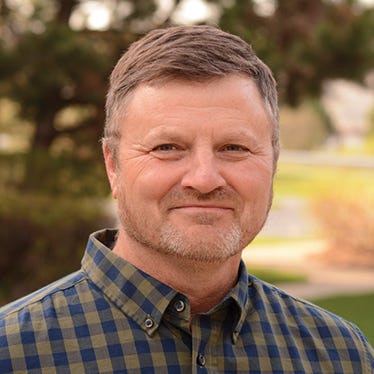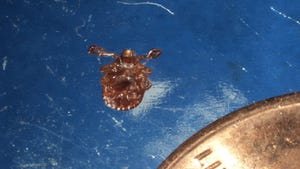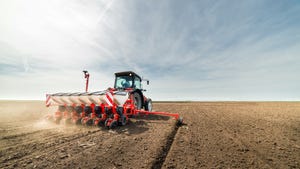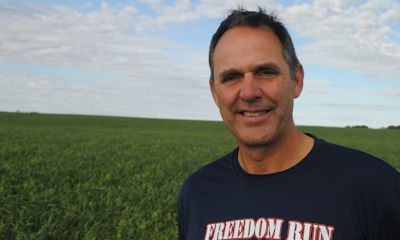
Learning by doing is a motto Cedar County farmer, Jeff Steffen takes to heart, because he is always testing and learning about new practices and new seed varieties on his farm. With test plots every year for at least three crops he is growing, along with tests of varied herbicide and nutrient treatments, Steffen understands how individualized crop performance can be.
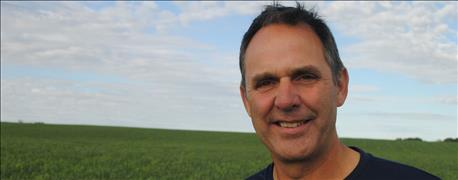
LEARNING BY DOING: Cedar County farmer, Jeff Steffen, has developed a series of test plots of different crops and practices on his farm, including varied rotations and adding cover crops to the system. "This is my third year of using cover crops, so I'm trying to find the right rotation," Steffen says.
"This is my third year of using cover crops, so I'm trying to find the right rotation," Steffen says. Testing different varieties and treatments helps him formulate the rotation and the results he is looking for. For instance, this past year he tested a reduced nitrogen treatment on irrigated corn that had been planted into high residue cover crop stubble following a previous year's crop of field peas. Steffen applied only 120 units of nitrogen to the crop and harvested yields up to 253 bushels per acre on that field. Now he wonders how much lower he could go with nitrogen and still maintain such strong yields.
Steffen markets non-GMO certified soybean seed and certified oats seed, so getting the most value from these cash crops is also a factor. "I've always done corn and soybean test plots, but I just started doing an oats plot too," Steffen says. "If I am selling seed, I want to be able to give personal information to my customers about the varieties. I take photos of the plots and send them to customers as the crop progresses through the growing season. That way, when someone is interested in seed, I have personal experience to share with them." About half of his oat seed sales are local for cover crop seed, with much of the rest going to Kansas for grazing plantings.
In his own rotation, oats is planted on about one fourth of his crop ground, providing root structure to the soil. "It helps clean out the weeds. I don't have waterhemp going to seed in my oats fields, so I have a good weed control year," Steffen says. "After oats harvest, I burn it down with glyphosate and plant the stubble back to cover crops."
~~~PAGE_BREAK_HERE~~~
This is the first year Steffen tested non-GMO certified public soybean varieties from South Dakota State University. Although many land grant university soybean seed research programs were nearly abandoned in recent years, because of weed resistance issues with GMO soybeans, there has been a renewed interest in non-GMO soybean seed from farmers, Steffen says. He plants soybeans early - before corn - so they are harvested early enough in the season to plant the stubble back to cover crops. He drills all of his seed with a heavy 20-foot John Deere no-till drill. "Not many no-till drills are able to effectively plant into heavy cornstalk residue," Steffen explains. "I crank up the weight and put the seed in deep. It takes some horsepower to pull, so the size of my drill fits my power capabilities."
Different fields and soil types lend themselves to different rotations for Steffen. One of his rotations is corn-oats-corn-soybeans-oats. He plants field peas on contract and for his own cover crop seed. "Where I have field peas, the rotation is basically corn-field peas-corn-soybeans," he says. "I plant field peas on the same ground only once every four years because of disease potential," he says. "This year I did have some disease issues and had to treat the fields with fungicide."
Getting the rotations right with cover crops takes time and patience. "I'm still making mistakes and you don't have enough years to get it all figured out," Steffen says. Different types of crops in a cover crop mixture handle herbicide carryover differently. "This fall I wanted to get two kinds of clovers going," he says. "The lentils and peas did fine, but the stand of clovers was not as good as it could have been. I think I had herbicide issues holding the clovers back. You really need to look at your rotational guidelines and see what works best with that herbicide," he says. "Everything you do impacts so many things."
If you'd like to learn more about Steffen's on-farm variety and treatment test plots or cover crop strategies, contact him at 402-357-3740. For no-till or cover crop information, call University of Nebraska Extension research engineer and no-till systems specialist, Paul Jasa at 402-472-6715. Learn more by reading the cover story and accompanying inside article on Steffen in the January 2016 issue of Nebraska Farmer.
About the Author(s)
You May Also Like


